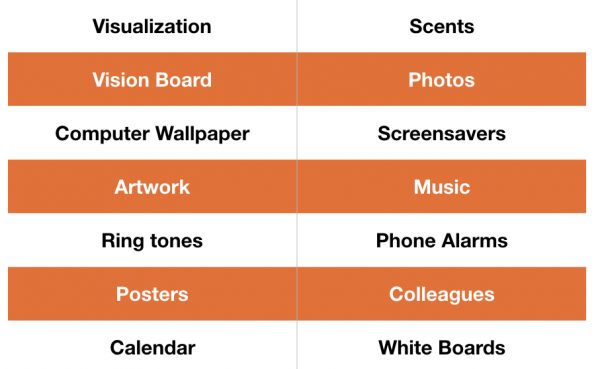We begin each new year with great intentions. We have high hopes that this will be the year we … lose weight, go back to school, write a book, publish our research findings, work less… The list goes on.
And then about this time, these great intentions fall by the wayside. We are human after all.
But it’s the next thought that crushes us.
We think – “I’ll do it next year” – as if we don’t have 9 months left to accomplish our goals!
It’s an absurd phenomenon. Yet, we all fall into the trap of thinking the new year is the only time to make goals and that if we don’t crush them immediately, then we have failed.
It’s for this reason, I’m not a fan of new year’s resolutions.
I’m here to tell you that you can create big audacious goals any ‘ole time of the year. In fact, making them right now is an awesome time.
Why?
Because why not?
I’ve been working with clients on crushing their goals using the seven evidence-based principles in goal meeting.
(See the changeup in words there – goal meeting – rather than goal making? Because why bother making them if you aren’t set up to meet them?)
You can download the FREE Thriving with Goal Meeting Action Pack I created for you here. (Newly edited)
Seven Evidence-Based Principles of Goal Meeting
1. Clear
-
Be specific as possible when writing your goals. Anyone should be able to read your goal and know exactly what you are going after, how you will measure your success, and by what date you will have met the goal.
-
Be clear about why you want to accomplish this goal.
Write goals using approach rather than avoidance language.
Our brains do not hear the word “not”.
-
In other words, your goal should be stated in positive language – what you want to accomplish rather than what you want to stop doing. If you’re having difficulty knowing if your goal is an approach goal, ask yourself, “What does my goal show I DO want?”
If you’re having difficulty with creating an approach goal, ask yourself these questions:
“How can I state that in the positive?”
“What is the positive opposite of that?”
2. Challenging
-
The research is clear. Challenging goals are more motivating than easy goals. When your goal is difficult you’re more likely to have positive emotions than if you set easy goals.
-
Challenging others with friendly competition toward goal meeting or action steps toward your goal can also be motivating.
3. Complexity
Set appropriate timelines to meet your complex goal.
-
Break down large, complex goals into smaller sub-goals (tasks). This will make staying on task much easier, less overwhelming.
-
Be realistic about your skill level, resources, and time. Perhaps you need to delegate tasks that aren’t in your wheelhouse or aren’t your genius work.
4. Check
Feedback on your progress is important to keep you on track.
-
Schedule time once a week to check in with your goal progress. Determine what has and hasn’t worked. Make adjustments accordingly.
-
Use an app to track your progress or use a simple paper calendar and place a big red X on each day you accomplished an action step toward your goal.
-
Celebrate all your wins – large and small.
-
Plan out the rewards you will give yourself when you reach pre-defined milestones. This will keep you motivated to work through the challenges.
The rewards need not be expensive.
-
5. Committed
-
Check to be sure your goal is in alignment with your values. If not, you won’t be committed to meeting your goal.
Keeping up the momentum can be difficult when going after a big audacious goal.
-
When you’re making a decision whether to give in to short term desires or stay committed to your long term goal – ask yourself what the members of your Board of Directors would do.
-
-
Use primers: conscious or unconscious cues paired together to create a behavioral change is another great strategy to stay committed to your goals.

Stay committed by writing out your goal in either your planner or journal at the start of each day.
Bonus: It helps to stay in a positive mindset if you write a gratitude for what you have prior to writing out what you want.
Activities that seal a commitment to yourself increase the probability that you will achieve it.
- Writing a contract to yourself and signing it is one such activity.
Making an announcement on social media is another viable activity.
6. Collaborate
Find an accountability partner who will keep you on track – one who will help you move forward – not allowing you to get steeped in your story about why you aren’t on track.
Create a friendly competition with a friend.
Collaboration also means collaborating with people in your life who can either support or thwart your efforts. Are these people all in? Do they agree to support you going after your goal?
7. Catches
What might you get caught on? Think of these catches like the barbs on a fence catching a piece of your clothing and holding you back from moving forward.
Pre-determine where you might encounter catches or pitfalls and set an implementation intention for what you will do when they arise. Because let’s face it. There will be catches along the way.
The good news? Setting implementation intentions triples your chance at goal success!
A goal without a plan is just a wish.
-Antoine de Saint-Exupery
An implementation intention looks like this:
“When X situation arises, I will perform response Y.”
Example: Let’s say I am decreasing my alcohol intake and I know I drink more when I experience negative emotions.
My Implementation Intention might be: “When I am tempted to drink alcohol to buffer my feeling, I will allow myself to feel my emotions and then ask myself what I really need.”
Implementation intentions save your mojo, build good habits, reframe negative experiences into positive ones, and remove ambivalence.
It’s never too late to create a goal nor go after it.
Use these strategies and you will thrive at goal meeting.
Adam-Miller, C. & Frish, M. B. (2009). Creating Your Best Life: The Ultimate Life List Guide. New York: Sterling Publishing.
Gollwitzer, P. M. (1999). Implementation intentions: Strong effects of simple plans. American Psychologist, 54(7), 493-503.
Locke, E.A. (2002). “Setting Goals for Life and Happiness,” Snyder, C.R. and Lopez, S.J. (Eds.), Handbook of Positive Psychology. New York: Oxford Press.
Zhivotovskaya, Emiliya Owner of The Flourishing Center and Co-founder of the Certification in Applied Positive Psychology. https://theflourishingcenter.com/
“Our biggest regrets are not for the things we have done
but for the things we haven’t done.”
-Everyone
I hope you have a great day!
Caring about you,


Comments
Add Comment